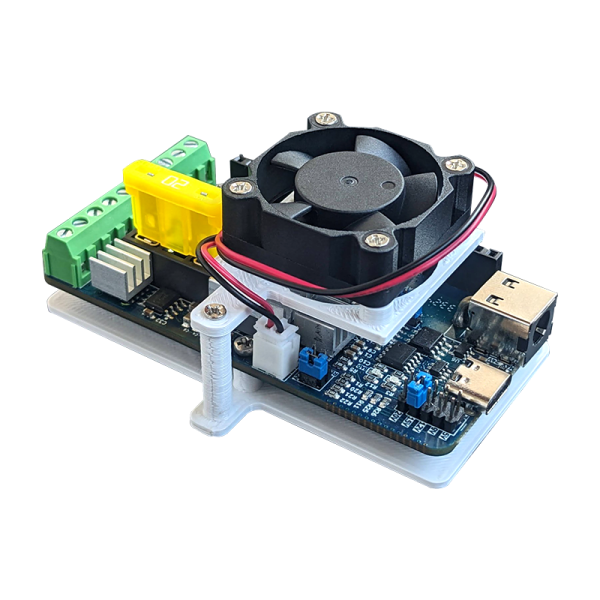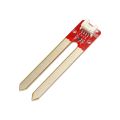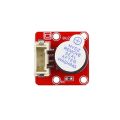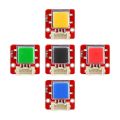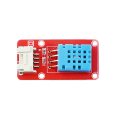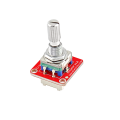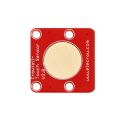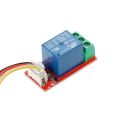YULC (Yes, a Usb-C Led Controller)
YULC consists in a full-featured board that can replace a lot of wiring messes, optimizing space and debug time in a reliable way
Description
YULC is the perfect dual-channel mate for powering lightings at 5, 12 or 24V. Thanks to the built-in buck regulator, from a maximum of 24V ensures safe 5V or 12V to your output, taking adavantage of the Power Delivery (PD) 3.0 protocol up to 100W. On the back of the board there is a powerful ESP32-S3, directly programmable from the USB-C that allows you to manage even more complex effects and to run heavy tasks.
**What's in the box?**
The YULC Development Kit will include:
- 1 x YULC
- 1 x 15A blade fuse
- 1 x Set of heatskinks (Regulator, inductor, 2 Mosfets, not mounted)
- 1 x 5V Fan
- 1 x Set of M2 screws for the enclosure
- Enclosure not included
This development board can run WLED, ESPHome and other open-source softwares, keeping privacy and local control at the top of the priority list, without neglecting protections for both the carger and the connected strip.
YULC provides two ways to feed your LED creations.
- Take advantage of the supported Power Delivery 3.0 protocol and ask for up to 100W from your compatible charger choosing one of these voltages: 5V, 9V, 12V, 15V and 20V. Using a Type-C PD charger will make you save a lot of space in your setup while still being highly efficient.
- Connect to the 2.5x5.5mm barrel jack any power supply up to 24V that you already have!
Thanks to YULC's internal structure, you'll be able to set it up in the best way possibile for your particular application and led strips. How?
-
Direct routing Power: Routing the input power straight to the strips for maximum efficiency.
-
Bucking-Down Power: Using the built-in converter to deliver 5V or 12V to your strips, with a maximum of 20A. Simply populate one of the two fuse holders to select your preference.
What really sets YULC apart, is the integrated buck converter that you can use with both the barrel jack or both the USB-C input. This solutions allows you to match exactly your desired voltage/current combination at the output, without being forced to use power supplies of the same voltages of the strips you want to power. Also forget to have two power supplies, one for the microcontroller and the bigger one for the strips. With YULC everything has been reliably compressed in one single board that take care of everything.
YULC provides two separate LED channels, each equipped with a level shifter to ensure clean data transmission even for extended LED strips. You won't need any external level shifter, neither sacrifying a pixel to boost the data voltage.
Each channel also can be independently pyhisically turned off through dedicated N-Mosfets that will switch the positive side to save a considerable amount of power for long strips in idle state. Being integraded inside YULC, you'll not need to wire an external relay to cut the high voltage side of the led strips power supply, considering that it would be even more difficult to have a dedicated relay for every channel. Furthermore, thanks to mosfets, you are also able to dim simpler strips through PWM technique
Here the complete set of protections:
- Heatsinks and active cooling to keep reasonably temperatures even at the highest loads (20A from the converter)
- Overtemperature protection offered from the regulator IC
- The main blade fuse directly protects the regulator (and so the charger) against overload faults. You can choose to use a 20A to make the regulator not to reach its physical current limit or you can resize it to 5/10/15A according to what your strips need. The holders are compatible with both the mini and standard dimension blade fuses.
- Back-to-back MOSFET configuration ensures safe programming while using an external power supply.
- YULC safely negotiates voltage with your USB-C charger. If the charger can not provide the requested voltage, the current is automatically blocked and nothing will be powered. Also during the negotiation, nothing will be powered until the voltage has been successfully provided by the charger. This safety mechanism grants that a wrong voltage won't damage components or the connected LED strips with too high/low voltage compared to the selected one.
- The ESP32-S3 microcontroller can detect the blown fuse making troubleshooting easier in case of a shorting output or an overcurrent event.
The open-source aspect is very important. It allows anyone to take part in the project and keep it alive for a longer time, improving and developing it over time while contributing to research in that field. This is why the schematic, enclosure files and the complete documentation is available for everyone.
Related to this topic, be sure to read the terms_of_use

